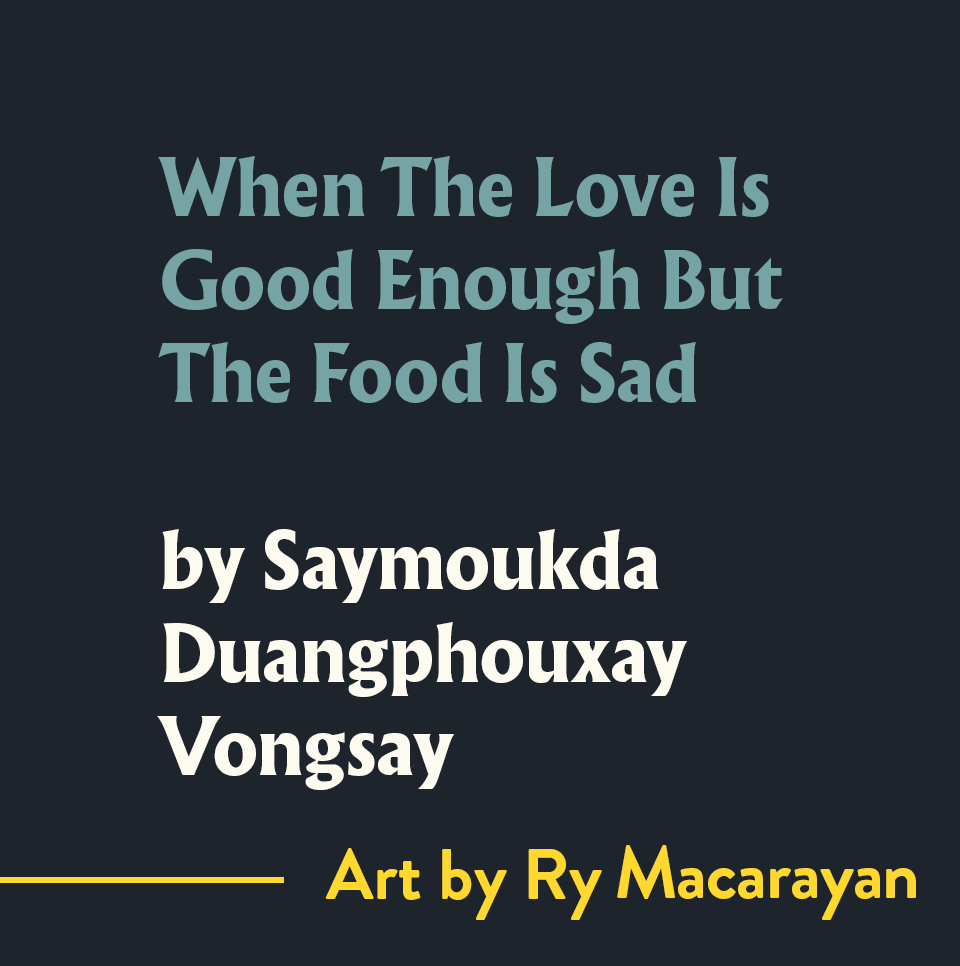
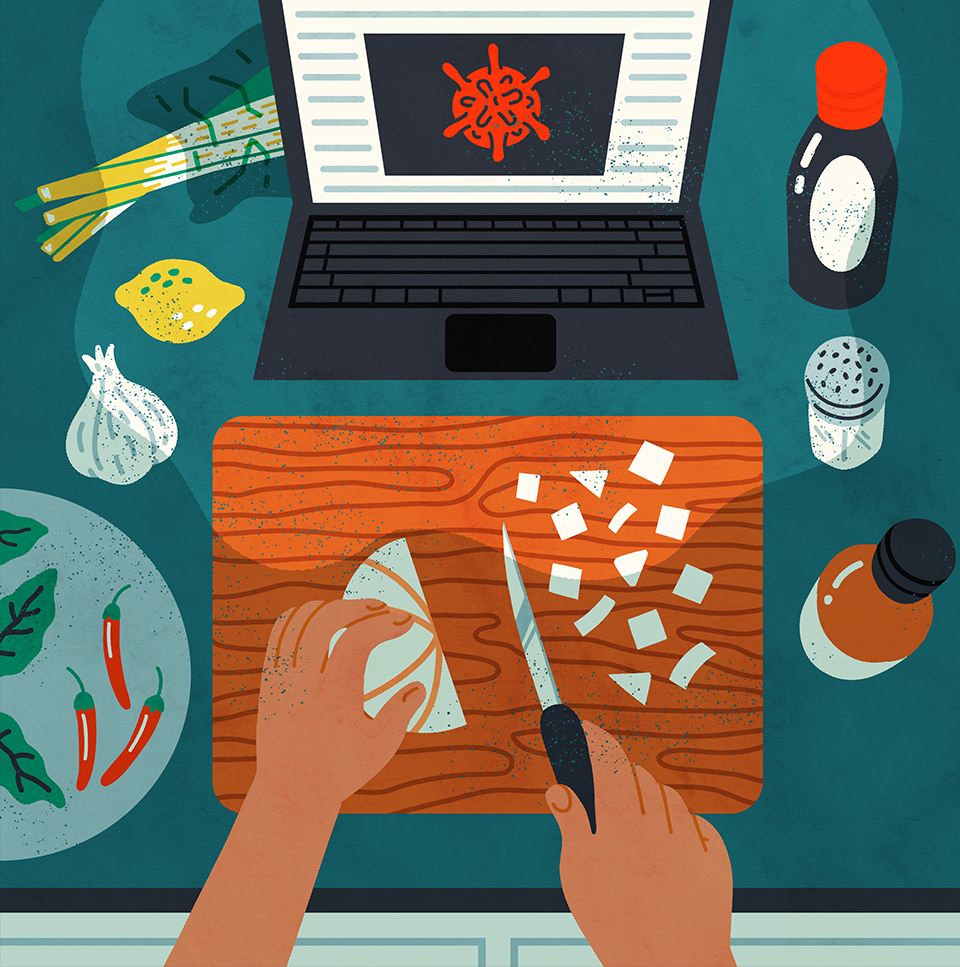



Food is love. Love makes a home.
That’s what my mom has always said. It’s what I’m hearing over and again in my head every time I haul ingredients from the fridge to the counter. And when I’m crushing cloves of garlic and lemongrass. And when I’m crying through a moment of chopping onions. I hear her when I’m tasting broth and auditing the jars of spices scattered next to the stove. Mom never used non-Asian herbs (whatever that means) and so why am I thinking of adding dried parsley to the tom yum? What is wrong with me?
I am trying to love hard during this pandemic. In some ways, I want my father to feel like my mom’s few attempts to teach me how to season laab, a spicy zesty herb-a-licious beef salad, were successful. I struggle because I do not know how to make authentic Lao food that’s…edible.
It looks like the thing but it doesn’t quite taste like the thing is supposed to taste like.
My husband doesn’t know any different and so he has never complained.
Before my mom got too sick, she cooked Lao food every day. From scratch. With lots of spices. With lots of love. And so much, maybe too much, freshly steamed sticky rice. My dad always managed to finish everything. Empty bowls and bamboo rice baskets satisfied my mother.
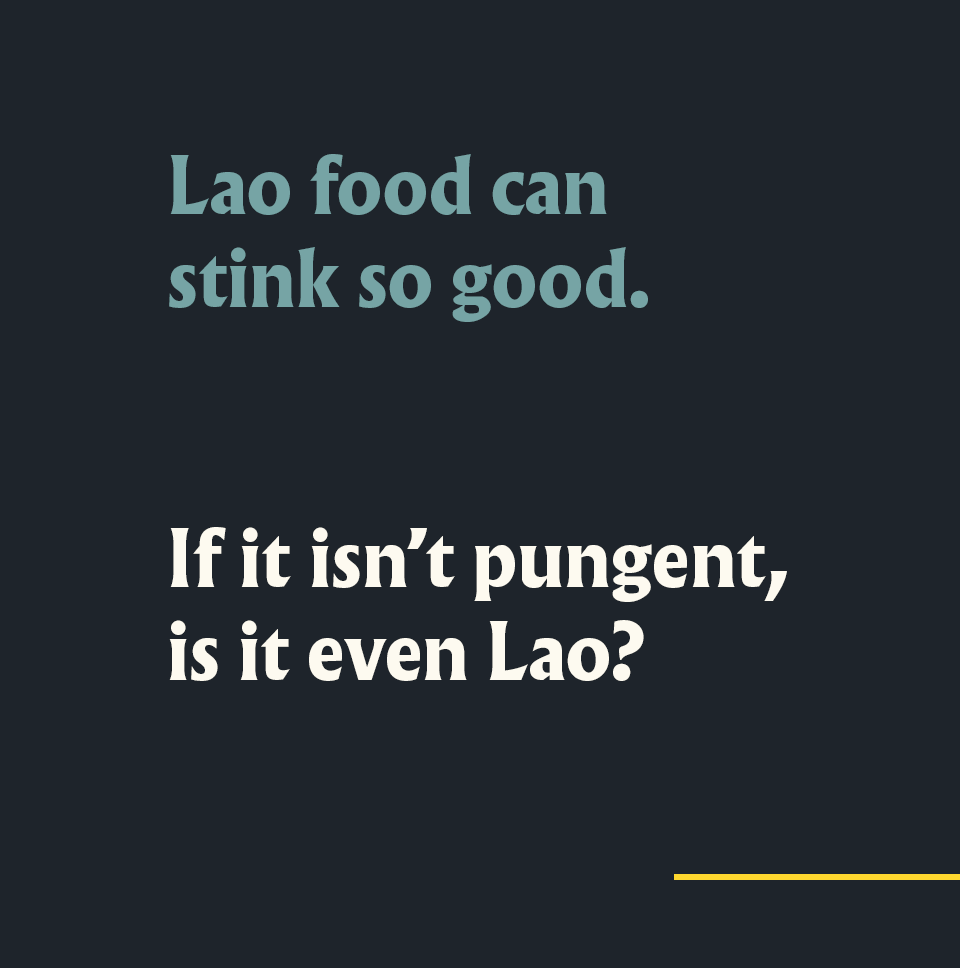
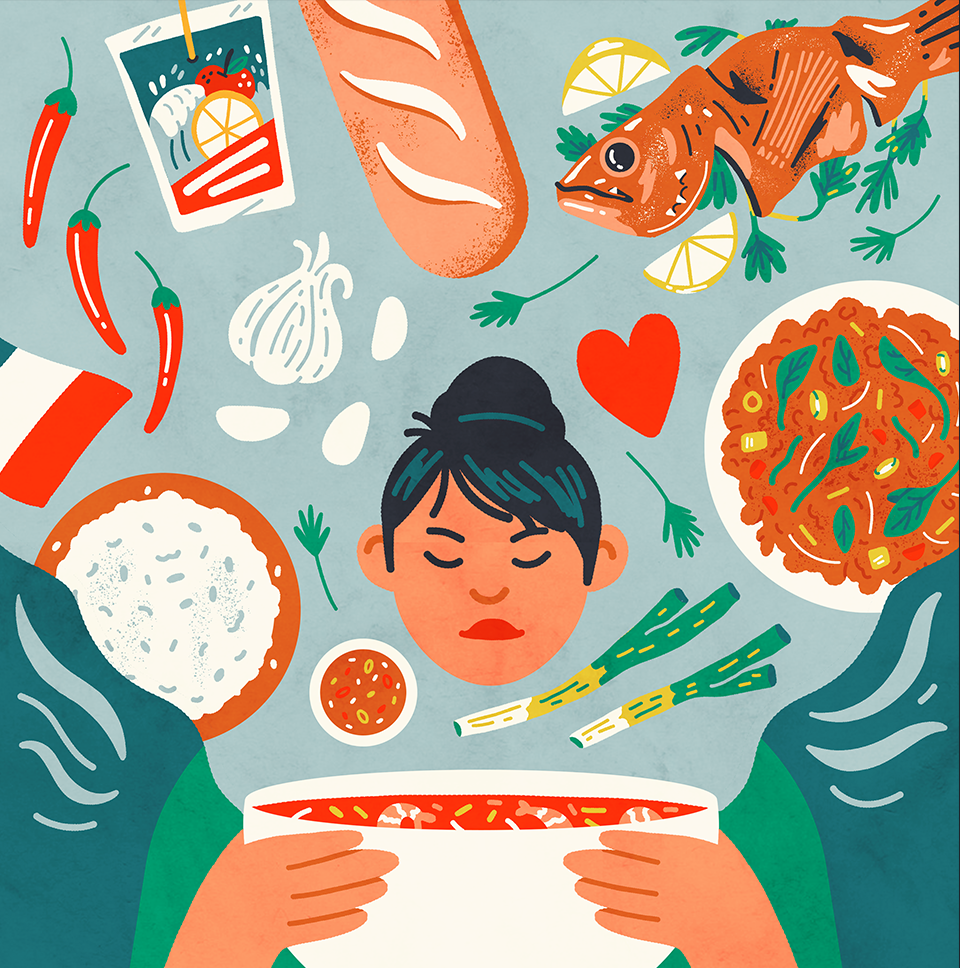
Lao food can stink so good. If it isn’t pungent, is it even Lao?
I have always cooked authentic Lao food inside of my home. I don’t care if the stink of the fish sauce sticks to the wallpaper. I love how roasted garlic and grilled chili pepper stings my nose hours after I’ve turned off the stove.
I want my friends to walk into my home and say, “Mmmm, it stinks so good in here!” and then I pass them the sticky rice and stir-fried fermented smelt dip. And they don’t complain because they care about my feelings.
Lao food can break your heart.
When my brother and I were growing up, my mom packed us Capri Sun and small bags of chips for lunch. But there was a time when she packed us Lao food. All I know is, at some point, after talking to my brother, she stopped sending us to school with our two-tiered bento boxes. I didn’t understand it then that my brother was being bullied. And I didn’t understand it then that my mom’s heart was broken for us.
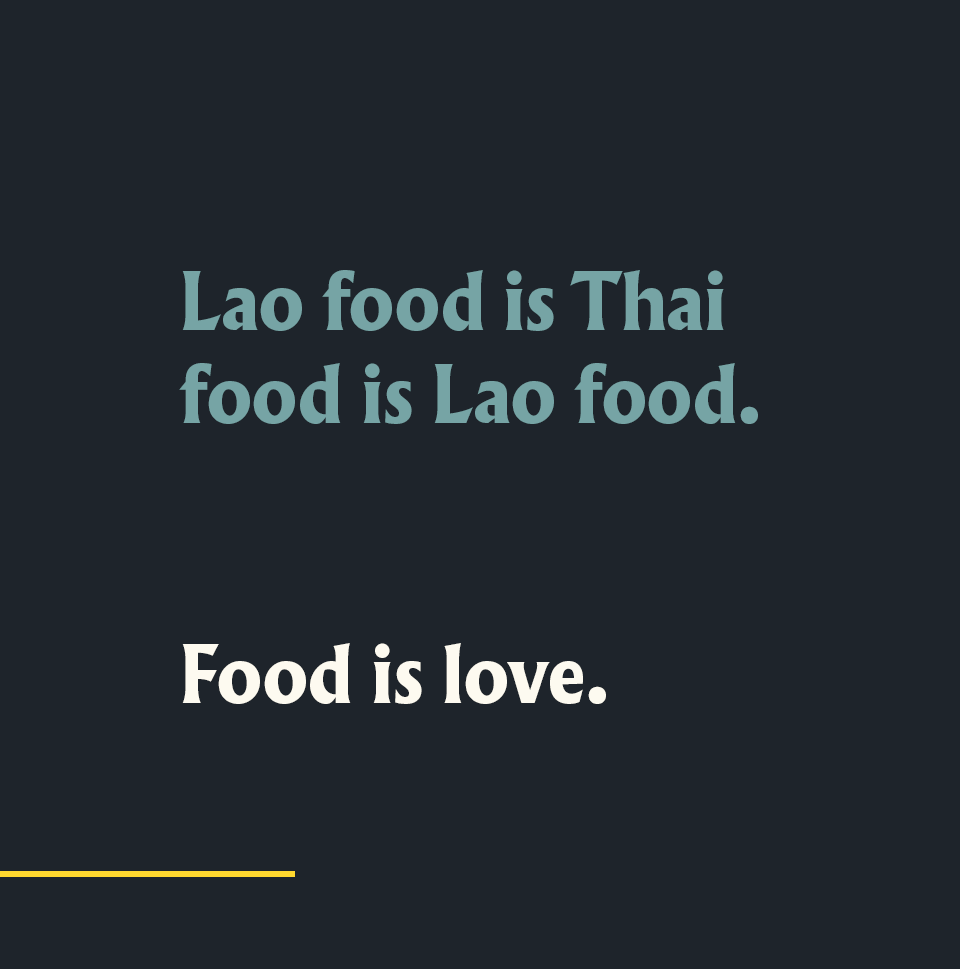
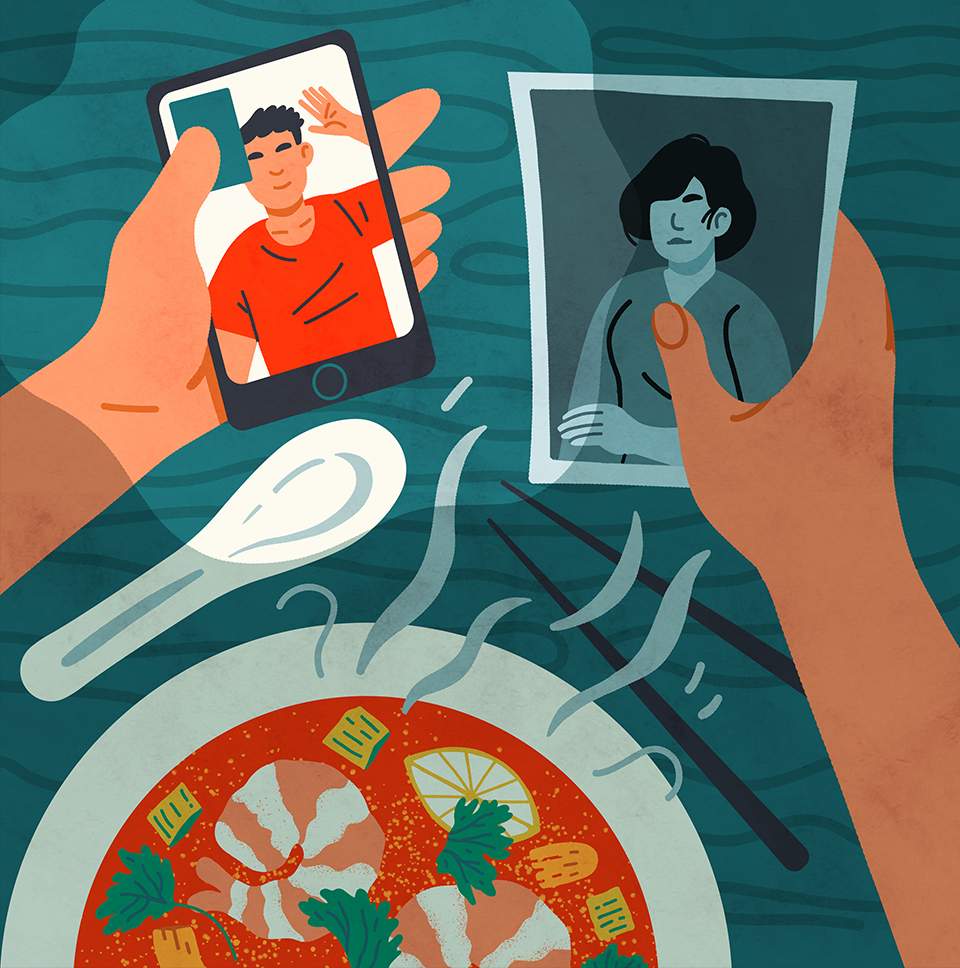
Lao food is Thai food is Lao food.
I have always been proud of our food. My mom was a chef by accident. Before the war, my mom was training to become a lawyer. She came from aristocracy. Her dad was governor of Savannakhet province in Laos. She went to a French lycée. She learned French recipes by watching and mimicking her father’s staff. She learned Lao ones from her aunts and the village women. She enjoyed helping to make meals for her siblings and father. But because she was whip-smart, her father veered her towards law.
After the French left Laos, a civil war broke out. Following the civil war, Laos was engulfed in a proxy war of the Vietnam/American war in the 60s and 70s. All of the instability disrupted her dreams.
When our family came to Minnesota, my mother was primarily a homemaker. It wasn’t until we were a tad older that she accepted seasonal work at the wreath-making factory and the fruit cutting factory. In the mid-90s, my parents made up their minds to try to save up for their first home. My mom accepted work at a Thai restaurant.
My brother and I were used to seeing her after school and playing with her. The more she found a sense of home for herself at the restaurant, the less we saw her. I mourned losing time with my mom but she was putting in the hours that she did because she wanted better for us.
Food is love.
I feel guilty when I forget to replenish food offerings for my mother’s altar, especially during this time where we are told to shelter in place. Today, I made twice-baked potatoes, sweet kale salad with grapefruit, and madras lentils (from the best place on earth aka Costco). I feel incompetent when I place non-Lao food for her spirit. But she hasn’t complained. If she were upset, I bet the pots would be banging.

You’ll need:
Directions:
1. Get your oven to 375F.
2. Cook the beef to medium-rare (or to your liking). When the beef is ready to be removed from the oven, let it sit for a few minutes. Then, thinly slice the beef and place into a large mixing bowl.
While the beef is cooking:
1. Thinly chop the lemongrass, shallots, galangal, Thai chilis, and kaffir lime leaves. Add these to the mixing bowl.
2. Add the fish sauce, lime juice, and roasted rice powder.
3. Add chopped cilantro, mint leaves (no stems) to the mixing bowl.
4. Toss all the things that are in the mixing bowl.
5. You can serve the laab with sliced cucumbers, lettuce, thinly sliced Thai eggplants, fresh whole Thai chilis, and of course, freshly steamed sticky rice.


Read More
Saymoukda’s story is part of Pollen’s “Are You OK?” initiative, a collection of stories, art, and virtual gatherings that documents how our collective community is processing and healing during the this global health and financial crisis. Check the collection regularly to hear from our creative community as we keep up with the changes and challenges before us.
Contributors
We ask that you support these artists by donating to their Venmo accounts.